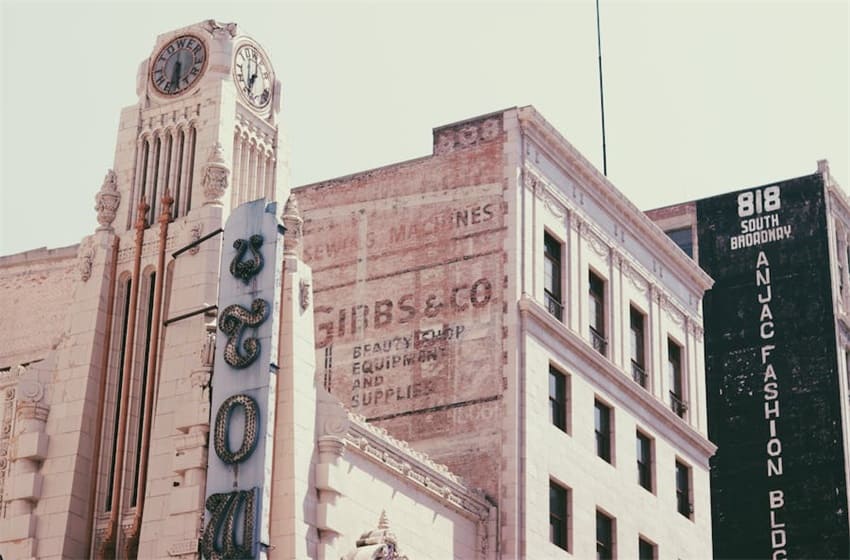
Are you passionate about historical landmarks in your area? Would you shed a tear for the destruction or decay of these old buildings that hold so much significance?
You might be a newbie at building preservation. However, don’t let that stop you from saving and promoting your locale’s historical, cultural, and architectural heritage. Are you all geared up to do your community service? Buckle up – this article will serve as a helpful guide.
Breathing New Life Into Old Buildings
First and foremost, it’s essential to approach this endeavor with a realistic mindset and a clear understanding of the commitment involved. Preserving a historic building is no small task, requiring substantial effort. Be prepared for extended work hours and a series of meetings as you navigate the complexities of securing funding for the project. Unfortunately, despite your best efforts, success in preserving a historical landmark is not guaranteed.
However, maintain your optimism. Direct your efforts purposefully, and you’ll discover that the prospect of preserving a tangible link to the past and enhancing your town is a compelling motivation to persevere.
Saving a Building: What to Do
Still, determined to follow through with your project? That’s fantastic news! Now, are you ready for the legwork? Let’s start from the very beginning.
Define the Building’s Significance
Why is your old building valuable? Did a significant event occur on the site? Perhaps an important figure owned it. Many things happen throughout the course of history. If the landmark was around for decades or centuries, chances are that it bore witness to many crucial happenings.
The building might also serve as a cultural icon. It would be a shame if it got torn down, only to be a placeholder for another shopping center. If your historic building helps your town retain its uniqueness, it’s worth saving.
Let’s not forget how many old buildings have rich architectural features that modern alternatives no longer celebrate. Fine craftsmanship is valuable, thus giving your landmark a reason to thrive.
To find out your building’s significance, get in touch with your local historian. Check out the town’s archives and pay a visit to the library. If you can include your building on lists of historical landmarks, be it locally, statewide, or federally, do it!
Determine Your Building’s Purpose
Anything without a purpose is literally useless. Your building might have served a distinct purpose in the past. Perhaps it was a home, hotel, or railway station. As time passes, its purpose may evolve, and that’s totally acceptable. However, it should always have one.
Before restoring an old building, you must determine its new purpose. Keep in mind that this landmark’s new reason for being must make sense to your town. Some examples include:
- Residential Building
- Commercial Building
- Organization’s Headquarters
- Museum
- Tourist Center
Engage Partners for Your Project
We’d like to reiterate that saving an old building isn’t something you can do alone. Partners will make the job much easier. Who can you recruit for your project?
- Historical Groups
- Community Organizations
- Local Government
- State Historic Preservation Officers
- Contractors/Developers
These bodies may help you secure funding, offer tax breaks, or educate you on state and federal regulations. As you can see, saving an old building isn’t as simple as restoring it. There’s much red tape involved. Essentially, they’re crucial assets throughout the restoration process.
Raise Funds
What’s the number one resource in your journey to preserve an old building? Undeniably, it’s money. It makes the world go around, and your project will require serious fundraising efforts. Here are some ways to go about this:
- State Grants
- Tax Credits
- Private Funding
- Donations
Fundraising may last as long as a few years. Even then, one may not achieve 100% funding. Nonetheless, you must design an effective fundraising campaign. Engage the help of a nonprofit or professional consultant with experience in the area.
Work on the Structure
There are a few methods to go about saving your old building. Ultimately, choose one that fits your situation and ensures the landmark remains for future generations.
- Preserve: You may want to conserve the building as it was. If so, prioritize saving the original materials.
- Restore: Historical restoration involves returning it to its condition in a particular era. Rely on archives, original building materials, and past techniques to capture a historic feel and look.
- Rehabilitate: It’s possible to save a building and alter it at the same time. Here, you’re repairing things while focusing on keeping portions of the building.
- Transform: Adaptive reuse is a method where you modify the building’s original purpose. For example, you can turn an old railway station into a museum space. In this method, you preserve historical characteristics but modify the internal areas.
- Pause Project and Mothball the Building: Sometimes, you may not be able to proceed with saving a building. Perhaps you face funding or regulatory issues. In that case, mothball is the place to prevent deterioration until you can move forward.
- Move: Remember that moving a building is always better than it being destroyed. However, this can only happen if its structures are sound and you have a new location lined up.

Promoting Old Buildings: A Quick Guide
Now that you’ve done what’s necessary to save an old building from destruction, it’s time to ensure your efforts won’t go to waste. How can you promote your landmark? Here are a few ways:
- Engage the Local Community: When people feel a sense of loyalty towards an old building, they will be enthusiastic about it. Raise awareness with public workshops and meetings.
- Collaborate: Local historical societies are a great resource to promote your building. Partner with them, schools, government agencies, and local businesses for support.
- Develop a Marketing Strategy: You know your building’s historical significance, but how about others? Promote it using social media, press releases, and local news outlets.
- Get Recognition: There’s no shame in seeking praise for your efforts. Preservation organizations give out annual awards to celebrate successful restoration projects.
Why Should We Protect the Past?
Believe it or not – protecting the past helps us create a better future. We must never forget our roots and the history of our cities. Read on for reasons to save old buildings.
- The Building’s Craftsmanship
Modern constructions often utilize commonplace materials like concrete, brick, and commonly found metals. In contrast, structures predating 1900 were crafted from superior materials designed to withstand harsh weather conditions. The fact that many of these buildings still stand is a testament to the exceptional workmanship and meticulous attention to detail exhibited by the builders of that era.
Early 1900s buildings also featured rare materials, such as heart pine wood, employed in flooring, walls, and doors, which are now challenging to source due to over-harvesting. Preserving these older structures provides historians with a valuable opportunity to enjoy the essence of a building’s creation and the many activities that unfolded within its walls.
- A Tourist’s Delight
An important aspect of local tourism involves exploring historical sites and structures encapsulating a city or town’s past. Imagining life before significant wars, automobiles, and mobile phones appeal to those discovering a new locale.
Old buildings possess an irresistible charm that contemporary structures cannot emulate, boasting distinctive features like weathered brick, cobblestone sidewalks, and antique streetlamps that resonate with senior tourists and inspire younger visitors. The peculiarities of historical buildings, including uneven flooring and original furnishings, are interesting attributes. It would be challenging to replicate them, underscoring the importance of safeguarding these architectural treasures.
- Irreplaceable Historical Legacy
The threat of demolishing historical buildings always triggers public protests, with citizens fervently advocating for the preservation of a city’s heritage. These structures constantly face challenges from landowners and city planners seeking financial gains and increased property values.
However, succumbing to the temptation to replace a historic building—surviving wars and adverse weather—with a shopping center means that future generations won’t enjoy the chance to breathe in its historical significance. The loss incurred by tearing down such structures equates to erasing a tangible piece of history. While it’s reasonable to improve and renovate historical buildings, completely tearing them down disregards their intrinsic value and contribution.
Start Your Project Today
If you’ve read till this point, it means that you’re genuinely enthusiastic about restoring and saving an old building. You are in the unique position to breathe new life into a structure that may have seen better days. Despite the arduous process involved, preserving an old building is worth it. Do it!


